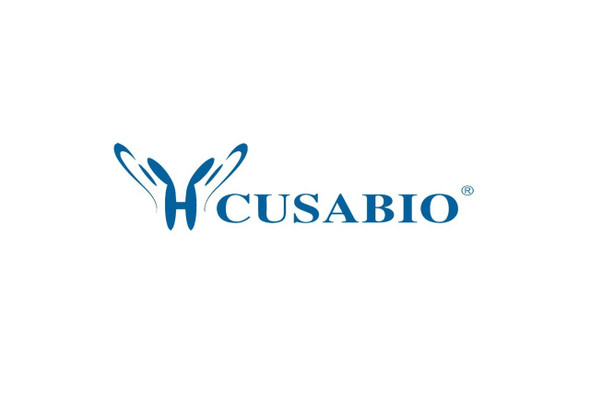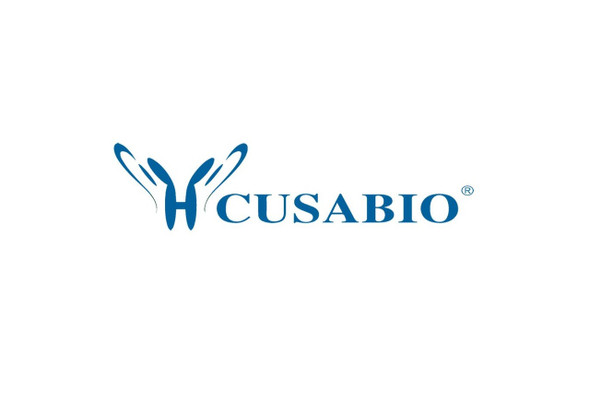Cusabio Human Recombinants
Recombinant Human Cyclic AMP-responsive element-binding protein 3-like protein 2 (CREB3L2) | CSB-EP754617HU
- SKU:
- CSB-EP754617HU
- Availability:
- 13 - 23 Working Days
Description
Recombinant Human Cyclic AMP-responsive element-binding protein 3-like protein 2 (CREB3L2) | CSB-EP754617HU | Cusabio
Alternative Name(s): BBF2 human homolog on chromosome 7
Gene Names: CREB3L2
Research Areas: Epigenetics and Nuclear Signaling
Organism: Homo sapiens (Human)
AA Sequence: MEVLESGEQGVLQWDRKLSELSEPGDGEALMYHTHFSELLDEFSQNVLGQLLNDPFLSEKSVSMEVEPSPTSPAPLIQAEHSYSLCEEPRAQSPFTHITSDSFNDDEVESEKWYLSTDFPSTSIKTEPVTDEPPPGLVPSVTLTITAISTPLEKEEPPLEMNTGVDSSCQTIIPKIKLEPHEVDQFLNFSPKEGLSALPVSLWVMDMVSGSTEREYGERAGMSLYHRCCSWLYEIALFLKNKNFASK
Source: E.coli
Tag Info: N-terminal GST-tagged
Expression Region: 1-247aa
Sequence Info: Full Length of BC063666
MW: 54.6 kDa
Purity: Greater than 90% as determined by SDS-PAGE.
Relevance: Transcription factor involved in unfolded protein response (UPR). In the absence of endoplasmic reticulum (ER) stress, inserted into ER membranes, with N-terminal DNA-binding and transcription activation domains oriented toward the cytosolic face of the membrane. In response to ER stress, transported to the Golgi, where it is cleaved in a site-specific manner by resident proteases S1P/MBTPS1 and S2P/MBTPS2. The released N-terminal cytosolic domain is translocated to the nucleus to effect transcription of specific target genes. Plays a critical role in chondrogenesis by activating the transcription of SEC23A, which promotes the transport and secretion of cartilage matrix proteins, and possibly that of ER biogenesis-related genes. In a neuroblastoma cell line, protects cells from ER stress-induced death. In vitro activates transcription of target genes via direct binding to the CRE site.
Reference: "Fusion of the FUS and BBF2H7 genes in low grade fibromyxoid sarcoma." Storlazzi C.T., Mertens F., Nascimento A., Isaksson M., Wejde J., Brosjoe O., Mandahl N., Panagopoulos I. Hum. Mol. Genet. 12:2349-2358(2003)
Storage: The shelf life is related to many factors, storage state, buffer ingredients, storage temperature and the stability of the protein itself. Generally, the shelf life of liquid form is 6 months at -20?/-80?. The shelf life of lyophilized form is 12 months at -20?/-80?.
Notes: Repeated freezing and thawing is not recommended. Store working aliquots at 4? for up to one week.
Function: Transcription factor involved in unfolded protein response (UPR). In the absence of endoplasmic reticulum (ER) stress, inserted into ER membranes, with N-terminal DNA-binding and transcription activation domains oriented toward the cytosolic face of the membrane. In response to ER stress, transported to the Golgi, where it is cleaved in a site-specific manner by resident proteases S1P/MBTPS1 and S2P/MBTPS2. The released N-terminal cytosolic domain is translocated to the nucleus to effect transcription of specific target genes. Plays a critical role in chondrogenesis by activating the transcription of SEC23A, which promotes the transport and secretion of cartilage matrix proteins, and possibly that of ER biogenesis-related genes (By similarity). In a neuroblastoma cell line, protects cells from ER stress-induced death
Involvement in disease: A chromosomal aberration involving CREB3L2 is found in low grade fibromyxoid sarcoma (LGFMS). Translocation t(7;16)(q33;p11) with FUS.
Subcellular Location: Endoplasmic reticulum membrane, Single-pass type II membrane protein, Note=ER membrane resident protein, Upon ER stress, translocated to the Golgi apparatus where it is cleaved, The cytosolic N-terminal fragment (processed cyclic AMP-responsive element-binding protein 3-like protein 1) is transported into the nucleus, SUBCELLULAR LOCATION: Processed cyclic AMP-responsive element-binding protein 3-like protein 2: Nucleus
Protein Families: BZIP family, ATF subfamily
Tissue Specificity: Widely expressed with highest levels in placenta, lung, spleen and intestine, and lowest levels in heart, brain, skeletal muscle, thymus, colon and leukocytes. In fetal tissues, the weakest expression is detected in brain and heart.
Paythway: cAMPsignalingpathway
Form: Liquid or Lyophilized powder
Buffer: If the delivery form is liquid, the default storage buffer is Tris/PBS-based buffer, 5%-50% glycerol. If the delivery form is lyophilized powder, the buffer before lyophilization is Tris/PBS-based buffer, 6% Trehalose, pH 8.0.
Reconstitution: We recommend that this vial be briefly centrifuged prior to opening to bring the contents to the bottom. Please reconstitute protein in deionized sterile water to a concentration of 0.1-1.0 mg/mL.We recommend to add 5-50% of glycerol (final concentration) and aliquot for long-term storage at -20?/-80?. Our default final concentration of glycerol is 50%. Customers could use it as reference.
Uniprot ID: Q70SY1
HGNC Database Link: HGNC
UniGene Database Link: UniGene
KEGG Database Link: KEGG
STRING Database Link: STRING
OMIM Database Link: OMIM









